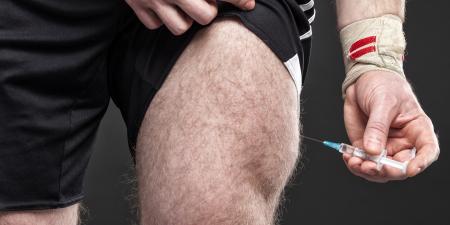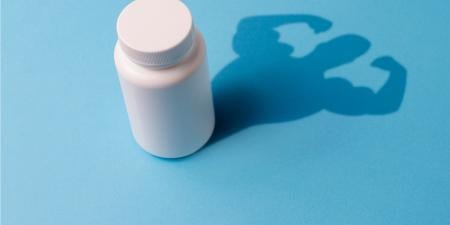While it may be tempting to consider the use of performance-enhancing drugs (PEDs) in sports as a modern phenomenon, the taking of substances to beat the competition has been going on for hundreds if not thousands of years. There is evidence that the Ancient Greeks and Romans gave their athletes special potions to improve their performance [1], and this trend continues to the present day, albeit with more sophisticated methods. One of the unfortunate realities associated with this drive to gain an advantage is that physicians have frequently been complicit, if not essential, in working with athletes to violate both the rules of sport and medical regulations.
Despite the advice of Sir William Osler that the role of the physician is “to educate the masses not to take medicine” [2] too often physicians have been athletes’ source of PEDs. The sophisticated doping programs of the former East German Democratic Republic and the Tour de France would not have been possible without physician assistance [3]. Surveys of National Collegiate Athletic Association athletes report that physicians are among their leading sources for obtaining anabolic steroids [4]. The reasons for this are myriad and include wanting to be associated with sports, monetary gain, naïveté, ignorance, greed, and desire to help the athlete, among others. In addition to sports, PED use has now spread beyond competitive athletes into the general population [5].
Throughout the centuries, athletes have used many different PEDs with varying amounts of success. One of the more recent drugs to gain popularity among both athletes and nonathletes is human growth hormone, hGH. Before 1985, patients with growth-hormone deficiency had to rely on cadaver pituitary extract for their treatment. Supplies were necessarily limited, costs were high, and use posed the danger of fatal viruses such as Creutzfeldt-Jakob disease. Fortunately for these patients, recombinant hGH (rhGH) was developed and has been available in the United States since 1985. This has increased the supply of hGH for GH-deficient patients, but also increased the possibilities for abuse.
hGH Use and Testing
Recombinant hGH is tightly regulated under the US Code 333(e): it is only allowed for very specific conditions such as pediatric and adult GH deficiency, smallness for gestational age, chronic renal failure, HIV-related wasting states, Turner Syndrome, and other rare diseases. It is not allowed to be used off-label for any other conditions or purposes, such as anti-aging interventions or performance enhancement. There are also very strict regulations for the diagnosis of adult GH deficiency. Despite these regulations, anecdotal stories of athletes abusing hGH have been known since the 1980s.
There has been a constant battle in sports between PED use and attempts to curtail it. Testing for anabolic steroids has improved, and athletes are trying other, less detectable substances. Testing for hGH is yet one more chapter in this story. Recombinant hGH is a 191-amino-acid single-chain polypeptide that is very similar to native hGH, which makes detection a challenge. The initial test developed in the mid-2000s for rhGH detection took advantage of the fact that native hGH is made up of multiple isomers, while rhGH contains only the 22kD isomer. When someone takes rhGH, the natural production of hGH is suppressed and the percentage of the 22kD isomer relative to the other isoforms increases. Although this test is accurate and there have been several confirmed cases of athletes who have admitted the use of hGH, the isoform test has a limited window of detection, usually on the order of one or two days following administration of the hormone.
Does hGH Enhance Athletic Performance?
But is the presence of hGH worth testing for? Thomas Murray, president emeritus of the Hastings Center and one of the most thoughtful scholars in the field of bioethics, said “good ethics begin with good facts” (personal communication, 2005), and that is true regarding the discussion of hGH and sport.
First, no studies have conclusively demonstrated that hGH alone improves performance or has positive effects that would theoretically affect exercise. Indeed, the only studies in which hGH was shown to have a positive effect on athletic performance were in anabolic steroid users [6, 7]. There are several possible reasons for this, however, that point to divergent possible underlying factors: the amount of hGH that can be used ethically in experimental studies is limited, and it is possible that athletes use doses far in excess of what could be studied ethically. Secondly, studies may be statistically underpowered to demonstrate small differences that are clinically insignificant but athletically important. For example, the winning time in an Olympic race can be determined by a difference of hundredths of seconds, and proving that a change in speed that tiny is occurring at statistically significant rates would require almost a billion subjects.
But there are other indications that hGH by itself is not effective. I have reviewed hundreds of patient files from physicians and clinics across the United States in my role as a consultant to law enforcement agencies investigating physicians. These physicians and clinics purported to practice in areas such as anti-aging medicine, hormone replacement therapy, and rejuvenation, by prescribing hGH, anabolic steroids, and related compounds—probably prescribing more hGH in a week than most physicians do in a lifetime. Although most of the prescriptions were illegal, these physicians had a very good working knowledge of hGH and anabolic steroids, and I have yet to see that even one patient was given hGH by itself. Every patient who received hGH also received testosterone, synthetic anabolic steroids, or combinations of the two. None of these physicians was willing to risk cash flow and patients’ satisfaction by prescribing hGH alone. Thus it seems unlikely that hGH has undemonstrated effectiveness when used by itself, so testing for it may not be accomplishing the intended goal.
A second, recently validated test, however, measures not the presence of hGH but rather its biologic effects. When rhGH is given to a patient, it has a variety of metabolic effects that produce an increase in several markers. Two of these are insulin-like growth factor I (IGF-1) produced by the liver and the N-terminal propeptide of prollagen type III (P-III-NP) that is produced by bone. The concentrations of these analytes have been studied extensively in a variety of medical conditions and subjected to intensive statistical analysis [7]. By measuring the concentrations of IGF-1 and P-III-NP, the test can discriminate between those who have used rhGH and normal controls. Although this is an indirect test, it has the advantage of being able to detect rhGH use up to two weeks after administration of the hormone and to measure the effect of rhGH and, potentially, other compounds that increase growth factors. This may turn out to be a more efficient method of deterring athletes’ use of PEDs than identification of every possible individual substance.
Larger Questions
Some athletes and nonathletes will always seek out physicians willing to provide them with illegal and illegitimate drugs. Given this reality, many have wondered about the utility, expense, and effort involved in curtailing the use of PEDs. Although PEDs like rhGH do pose health risks to athletes [8], sports in general pose many health risks that athletes willingly accept, some far more likely and more significant than those associated with PED use. This raises the question: why bother with antidoping efforts? The answer is complicated and beyond the scope of this article, but it can be summarized thusly: although each sport has its own individual character, one unifying principle is that all sports involve competition that measures a given participant’s performance against those of others according to a common set of rules. PED use has the potential to alter a sport so significantly that results are determined by who has the best chemist rather than who is the best athlete. Secondly, if there were no rules restricting PED use, sports would rapidly deteriorate, as in the former East German Democratic Republic. In addition, sports without PED regulations would pose an ethical quandary for athletes. They would be faced with three options: compete at a significant disadvantage, use PEDs in contradiction with their values, or quit the sport. I would argue that all three are unethical or unfair alternatives, as well as unappealing to competitors: the strongest support for antidoping efforts come from the athletes themselves. In my extensive work with competitive athletes, the overwhelming majority have been in favor of antidoping regulations as long as they are accurate, universal, and applied uniformly. When I asked a former Tour de France rider who was involved in the recent PED scandals if he thought the tour should eliminate all antidoping regulations, he replied, “No, that would turn it into a freak show.”
Conclusion
It is worth noting that, although the athletes who are caught using PEDs loom large in the public eye, those who compete cleanly and abide by the rules—those we don’t hear about—are in the majority. The ultimate purpose of antidoping regulations is not to catch cheating athletes; it is to protect the athletes who want to compete fairly. Although the concept of cheating through the use of PEDs goes back thousands of years, it is also true that valuing honorable competition is at least that old. As the Roman author Epictetus said around 100 AD, “if you seek truth you will not seek victory by dishonorable means, and if you find truth, you will become invincible” [9].
References
-
World Antidoping Agency. A brief history of antidoping. http://www.wada-ama.org/en/about-wada/history/a-brief-history-of-antidoping/. Accessed May 8, 2014.
-
Seminole County Medical Society. Sir William Osler, MD. http://www.scmsociety.com/pearls/2009/10/sir-william-osler-md-.html. Accessed May 8, 2014.
- Franke WW, Berendonk B. Hormonal doping and androgenization of athletes: a secret program of the German Democratic Republic Government. Clin Chem. 1997;43(7):1262-1279.
-
Bracken NM. Substance use: national study of substance use trends among NCAA college student-athletes. National Collegiate Athletic Association. http://www.ncaapublications.com/p-4266-research-substance-use-national-study-of-substance-use-trends-among-ncaa-college-student-athletes.aspx. Accessed May 8, 2014.
- Pope HG Jr, Wood R, Rogol A, Nyberg F, Bowers L, Bhasin S. Adverse health consequences of performance enhancing drugs: an Endocrine Society scientific statement. Endocr Rev. 2014;35(3):341-375.
- Graham MR, Baker JS, Evans P, et al. Physical effects of short-term recombinant human growth hormone administration in abstinent steroid dependency. Horm Res. 2008;69(6):343-354.
- Graham MR, Davies B, Kicman A, Cowan D, Hullin D, Baker JS. Recombinant human growth hormone in abstinent androgenic-anabolic steroid use: psychological, endocrine and trophic factor effects. Curr Neurovasc Res. 2007;4(1):9-18.
- Baumann GP. Growth hormone doping in sports: a critical review of use and detection strategies. Endocr Rev. 2012;33(2):155-186.
-
Epictetus. Stobaeus, Florilegium, V, 105. In: Harbottle TB, ed. Dictionary of Quotations. Sonnenschein; 1897:383.



